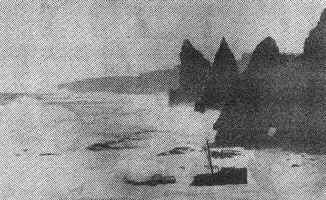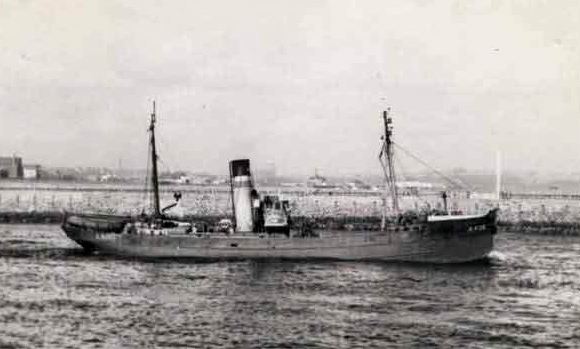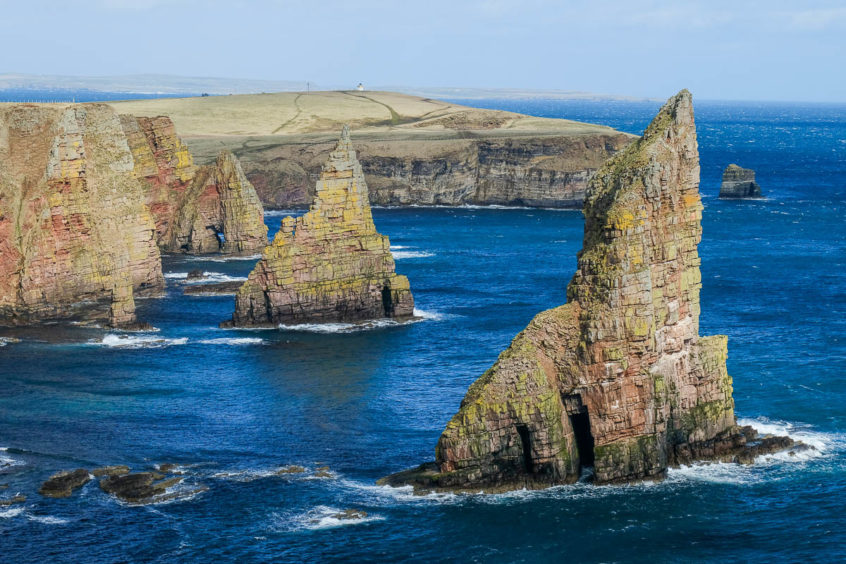The journey began in Aberdeen with a crew of mostly young men hoping they might secure a Christmas bonus for their loved ones.
But it ended in disaster when 12 sailors aboard the George Robb trawler, skippered by 31-year-old Marshall Ryles, were killed in the midst of a horrific storm off Duncansby Bay in Caithness en-route to the Faroes in December 1959.
The disaster – which claimed a 13th victim when one of the rescuers, Eric Campbell, succumbed to a heart attack – led to 34 children losing their fathers as communities grieved across the Granite City.
The youngest was aged just 13 months.
And, in places such as Portnockie, Banffshire and Cairnbulg, there were tears for other victims of the incident.
The John O’Groats Development Trust has been taking steps to try to create a permanent memorial to those who perished in 1959.
Its members are also organising a service on the 60th anniversary to commemorate the young sailors who were swept to their deaths in the Pentland Firth.
Trust member Andrew Mowat said: “This was one of the worst disasters anyone up here can remember.
“We have arranged a service on Sunday, December 6, which will be 60 years to the day since the George Robb sank.
“We have made efforts to track down relatives of the men who were lost, but it has so far proved a difficult task.
“Most of them were from Aberdeen. We think their relatives would like to be present at the service and we would certainly welcome them here.”
The loss of the vessel was felt particularly hard in Aberdeen, and there were so many poignant stories from among the ill-fated men who ventured to sea.
Deckhand David Lockhart, 30, from Torry, was no stranger to tragedy.
His brother, Findlay, had been killed in a “million-to-one” mystery electrical blast at Countesswells in the city a matter of months before the George Robb sank.
Second engineer Robert Dugan, 38, was coming home for Christmas to his wife and two sons – aged five and and nine – and his daughter Maureen, seven.
His wife, Nancy Dugan, recalled: “He was anxious to get the house painted before he left and he had been working hard to have it ready for Christmas and the New Year.
“I was getting Maureen ready for school when I heard about the boat on the radio. It was a terrible shock.”
Ulvjean Dempster, 22, the bride of four months of Peter Dempster, 24, was tidying their new home in Alexander Drive when her brother broke the news.
William Mackay, 35, the vessel’s chief engineer, hated the sea and spent almost every minute in port at his home in Strathmore Drive in Aberdeen.
He was the father of three children – aged from 13 months to seven years.
Following the incident, the Press and Journal suggested that if the trawler had been just 10 minutes ahead of schedule the disaster could have been avoided.
The report said: “In that time, the 91-ton trawler, bound for the fishing grounds, would have cleared the rocky Caithness coast and been able to avoid the 100mph gale in the Pentland Firth.”
To find out more about the commemorative service, visit www.facebook.com/johnogroatsdt or call Mr Mowat on 01955 611220 or e-mail amowat@jogdt.org
The men who died in the George Robb trawler disaster
A total of 13 men died in the George Robb trawler disaster on December 6, 1959.
Those who perished on the vessel were: Marshall Ryles, 31; Peter Dempster, 24; Bruno Saborowski, 39; William McKay, 35; Robert Dugan, 38; James Findlay, 30; David Lockhart, 30; John Adams, 45; George Duffy, 25; Albert Smith, 45; William Farquhar and William Duthie, both 47.
Wick coastguard station officer Eric Campbell, 50, died while heading to the wreck.


